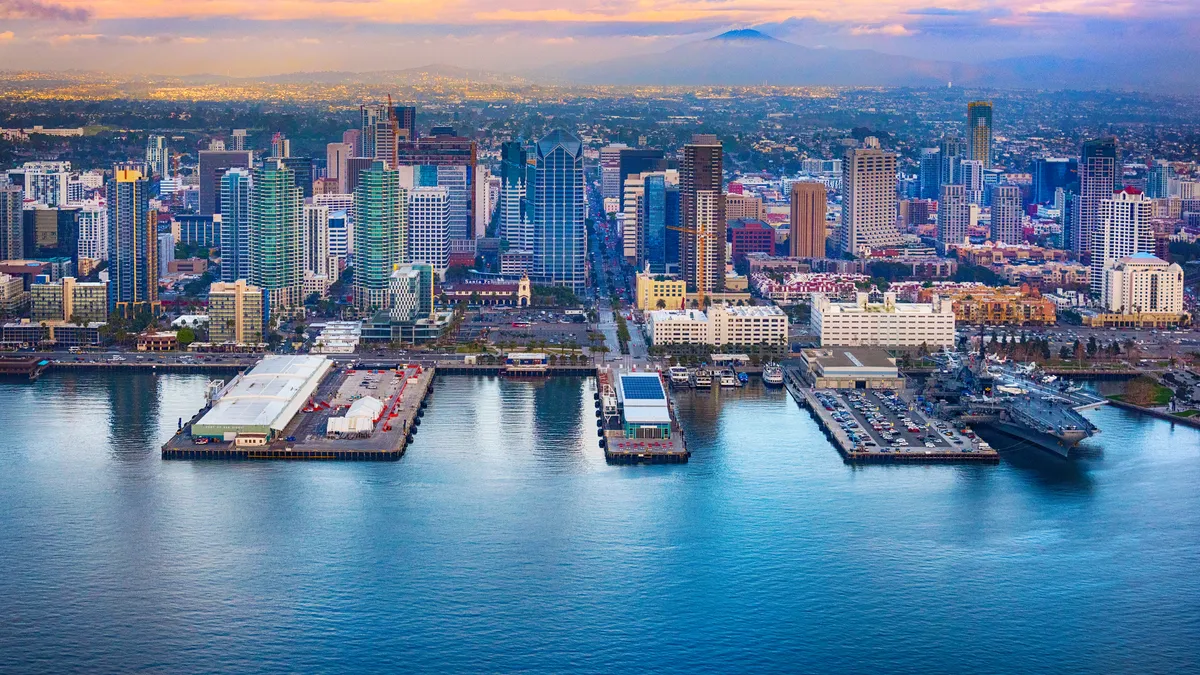Dive Brief:
- San Diego is the “greenest,” or most environmentally sustainable, city in the United States, according to a report released Wednesday by personal finance company WalletHub. Following the California city are Honolulu; Portland, Oregon; Washington, D.C.; and Seattle as the five greenest U.S. cities.
- The report looks at how the nation’s 100 most-populous cities compare across 28 key “green” indicators, including per-capita greenhouse gas emissions, green space, walking and biking scores, and whether or not the city has banned disposable plastic bags.
- “A well-run city is likely to also be a reasonably green city,” said Braden Allenby, an environmental scientist and Arizona State University professor, in an expert statement in the report. Green investment can make cities more livable, he said, but it must be done strategically to avoid eroding public support for green initiatives.
Dive Insight:
Judging the “greenness” of a city is not easy because cities differ so much from one to the next, Allenby said in the report. The indicators proposed by academics and others are usually “partial at best” and reflect bias against anything that goes against the established norm, he said.
That’s why efforts to rank cities’ greenness using just a few variables are likely to fail, Allenby said. “It would indeed be an unimaginative mayor’s office that could not come up with some indicator system that showed their city to be a leading green city,” he said.
To compile its ranking, WalletHub used data from 21 sources, including the U.S. Census Bureau, research and advocacy organizations, and digital platforms such as Yelp and Indeed. It scored the cities on a 100-point scale for each of the 28 green indicators it selected and then ranked them based on their total score. Not every indicator was weighted the same, however. For example, the share of electricity from renewable sources was given more than four times the weight that miles of bicycle lanes was.
Four of the five least-green cities in WalletHub’s ranking were in Arizona. Cities in California, a climate policy leader, were half of the top 10 greenest cities.
WalletHub also asked several experts what policies or investments “offer the biggest bang for the buck” for cities looking to become more environmentally sustainable.
Peder Anker, New York University professor of the history of science, suggested “creative regulation” has the best return on investment. “That is cost-free for the government,” Anker said. “Creating a pedestrian street is free, for example. The same is true for outlawing fossil cars. I believe creating green cities is a question of political courage, and not so much about money.”
Anker also said state and local authorities can attract renewable energy companies and other green businesses by “opening up their arms and screaming ‘Welcome!’ That might seem silly, but many green businesses actually struggle to get access to local authorities so that they can discuss their ideas.”
Other high-return-on-investment actions suggested include nature-based solutions, strict energy efficiency and performance requirements for buildings, and zoning or land-use policy. “Some governments never use [zoning or land-use policy] tools, so they allow free-for-alls, and a few decades later, we see dead malls,” said Sharon Moran, associate professor at the State University of New York’s Department of Environmental Studies.












